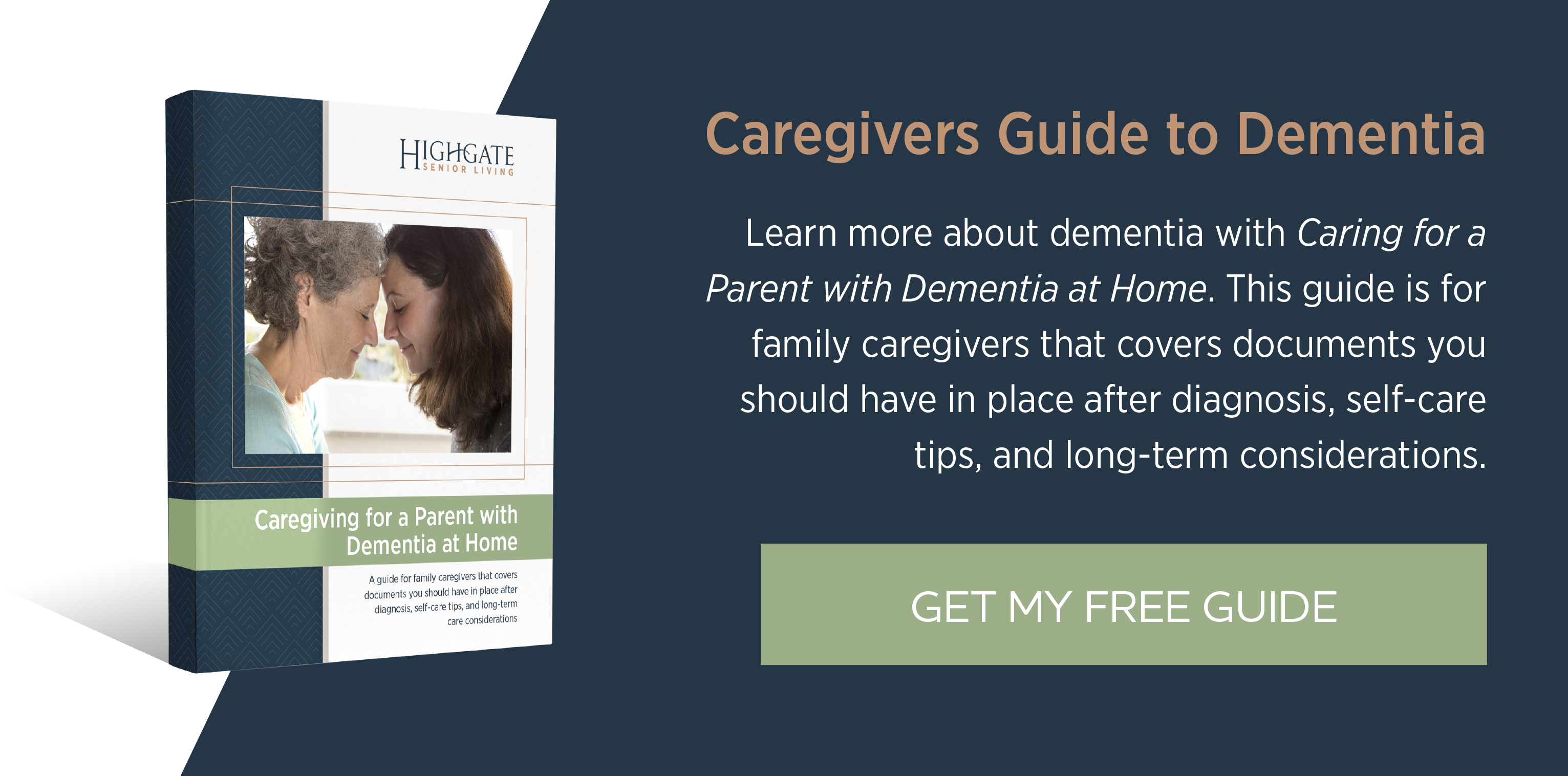
It’s one of the most challenging questions for family caregivers to answer: When is it time to take away the car keys from a loved one with dementia?
A dementia diagnosis doesn’t always mean that a person can no longer drive safely. However, as dementia progresses it not only affects memory loss, but visual-spatial disorientation and cognitive function worsen over time. Driving demands quick reaction time and fast decision-making, so at some point, those with dementia become no longer safe to drive.
Caregivers often struggle with the decision of whether to take the car keys away from a loved one. It’s an unfair position to be put in. Watching a parent lose their independence is hard enough, being the one to deliver the news, heartbreaking.
When is it time to have the conversation?
But when should you start to worry? As a general rule, individuals with early-stage or mild dementia who wish to continue driving should have their driving skills evaluated, and individuals with moderate or severe dementia should not drive.
There are usually some indicators families can look for, too. Some of the red flags indicating it is no longer safe for a person with dementia to drive include involvement in car accidents and minor fender benders, failure to drive appropriate speed limits, ignoring traffic lights and stop signs, getting lost in familiar places, and near misses.
Questions you can ask as a caregiver include:
- Do others feel uncomfortable driving with the person with dementia?
- Are others forced to drive defensively to accommodate the person with dementia's driving style?
- Is a co-pilot needed to navigate the automobile or to alert the person of potentially hazardous events or conditions?
- Has there been evidence of loss of ability in other areas of daily living activities such as medication use, financial management, cooking, and shopping?
But the safest option for assessing a person’s driving skills is to arrange for an independent driving evaluation by an occupational therapy driving rehabilitation specialist. The evaluation provides a more objective understanding of the current impact of the disease on driving capacity and results in a plan of options, with the goal of retaining the highest level of independence and mobility.
Here are some tips that can make the conversation a bit easier when it’s time to talk to a family member about putting away the keys.
1. Plan Ahead
Research shows that for the first two years after diagnosis, the accident rate of a person with Alzheimer’s disease is comparable to a person who does not have Alzheimer’s. However, as the disease progresses, the accident rate increases. The risk of accidents doubles every five years from dementia onset.
For people in the early stages of Alzheimer’s or other dementia, it is never too soon to plan ahead for how they will get around when they can no longer drive. Be sympathetic as you address the topic because losing the ability to drive yourself can cause feelings of loss of independence.
It’s never too soon to start the conversation and decide together what signs or symptoms might lead you to both agree it’s no longer safe for your loved one to drive anymore. It’s a much easier adjustment when they are involved in the discussion and agree to the signs or symptoms of dementia that would lead to the decision to stop driving.
2. Arrange for Services that Allow Your Loved One to Still Feel In Control
Have a plan in place before the day when your parent can no longer drive comes. They may still be able to live very independently on their own, but services that allow them to adapt to not having a car of their own anymore are key.
Identify how your parent will get to and from appointments or run errands. Maybe you plan to drive them when that day comes or can arrange for someone else to drive them. Or perhaps you take advantage of options that will allow them to continue to travel independently such as Lyft or GoGoGrandparent.
You can also reduce the need to drive by having prescription medicines, groceries, or meals delivered.
3. Continue to Monitor Driving
Detect problems before they become a crisis. Accompany your loved one on an errand or to a doctor’s appointment when possible. Driving skills can change rapidly.
Start with baby steps. Gradually, modify driving to reduce the risk of an accident. Encourage your loved one to try some of the following examples:
- Drive only on familiar roads, and avoid long distances.
- Avoid heavy traffic and heavily traveled roads.
- Avoid driving at night and in bad weather.
Ideally, your loved one will limit or stop driving on their own. But for some, this transition can be very difficult, and one is met with resistance. Acknowledge the pain of this change, and appeal to the person’s desire to act responsibly. Be patient and firm.
Only as a last resort should you take away the car keys, disable the car, or remove the car completely. And if you do any of these things, be sure to provide safe, reliable alternative transportation. Taking away the keys shouldn’t result in a parent that feels isolated and confined only to their home.
Involve family and close friends as well as health professionals when making the decision.





